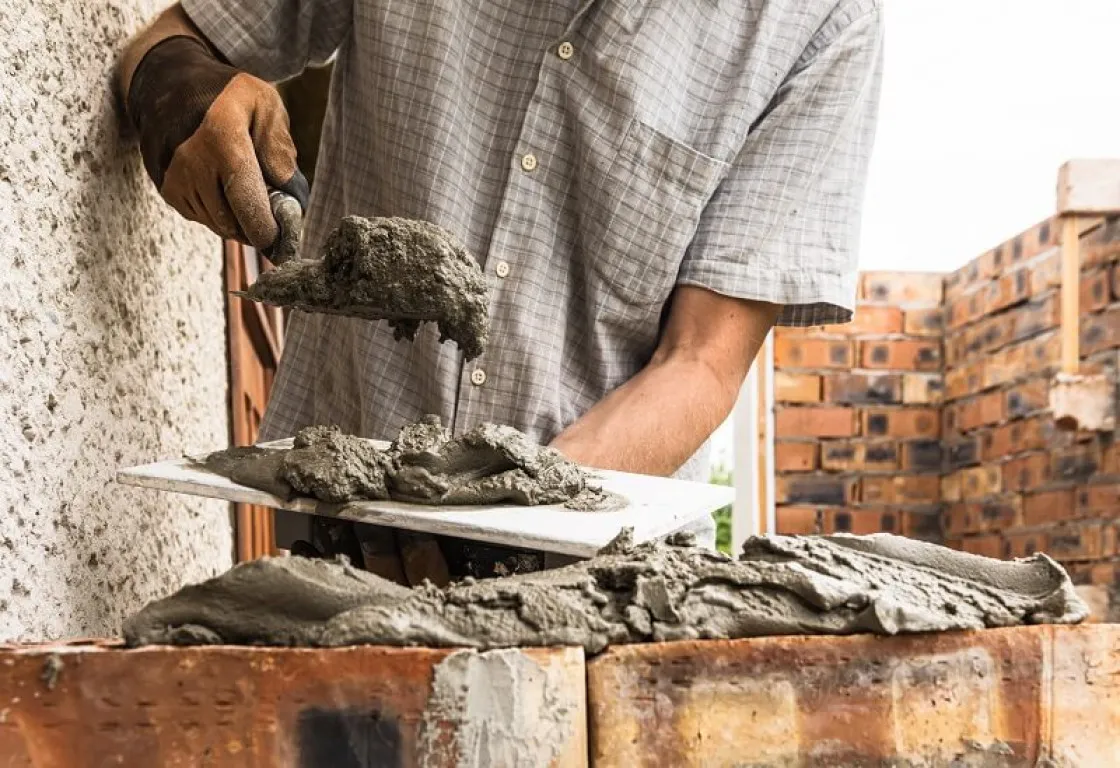When constructing a building, it’s essential to understand the different types of cement to ensure the structure is strong and durable. One of the most commonly used types of cement in construction is PCC.
PCC is a type of Portland cement that offers additional advantages due to the inclusion of materials such as slag, fly ash, pozzolan, and limestone. This article will explore what is PCC, its benefits, and more, so make sure you read through to the end!
What Is PCC?
Portland Composite Cement (PCC) is an innovative cement product that is considered more environmentally friendly as it contains additives made from waste materials like slag, fly ash, pozzolan, and limestone.
These additives also reduce the use of clinker, which is commonly found in regular Portland cement. PCC offers improved durability and resistance to various environmental conditions, making it suitable for both buildings and homes.
So, what exactly is included in PCC? Here are some of the key ingredients found in this type of cement:
- Portland Cement Clinker: The primary raw material for cement.
- Limestone: A type of rock that enhances the properties of the concrete mix and reduces the use of clinker.
- Pozzolan: A material rich in alumina and silica, which increases the strength and durability of the cement.
- Fly Ash: A byproduct of coal combustion that improves the concrete's long-term strength and durability through chemical reactions.
- Slag: A byproduct from steel production that helps reduce hydration heat and improves resistance to sulfates.
The process of making PCC generally involves several steps. First, all the raw materials are ground and mixed to achieve a homogeneous mixture. Next, the mixture is ground further until the desired particle size is reached. Finally, the cement is packaged for distribution.
Read also: Learn About Cement Raw Materials, Types, & How to Make It
The Advantages of PCC
PCC offers a variety of benefits in building construction which make it a preferred choice. Here are some of the advantages you can gain by using PCC:
1. Environmentally Friendly
PCC uses additives derived from industrial waste, which helps reduce carbon emissions and effectively utilize waste materials. Additionally, some of these additives also reduce the need for clinker, making the cement even more environmentally friendly.
2. Cost-Effective
The industrial waste additives used in PCC are cheaper than pure clinker. By reducing the use of clinker, PCC becomes more cost-effective as it helps lower the production costs of concrete.
3. High Strength and Durability
This type of cement provides excellent strength and durability, especially against chemical attacks. As a result, PCC is ideal for concrete mixtures used in the construction of homes, roads, and bridges.
Moreover, with the inclusion of slag and fly ash, PCC is resistant to hydration heat and sulfate reactions. This is why it is commonly used for building roads exposed to direct sunlight.
4. Smooth Texture
PCC is known for creating smooth and high-quality surfaces or concrete. Therefore, it becomes a great choice for projects that require a neat and polished finish. In addition, concrete mixtures made with PCC are also easier to work with and apply in construction projects.
Where to Use PCC in Construction
With advantages such as resistance to hydration heat, durability, and ease of use, PCC is commonly applied in various construction projects, including:
- Buildings: PCC is ideal for constructing residential homes, commercial buildings, and factories.
- Marine Projects: Due to its resistance to sulfate attacks, you can use PCC for projects in corrosive environments which makes it a good choice for marine constructions.
- Roads and Bridges: PCC can withstand extreme weather conditions and handles heavy traffic loads. Thus, it is perfect for building roads and bridges.
- Underground Infrastructure: With its high strength and durability, PCC is suitable for underground structures or tunnels.
Read also: How to Calculate Cement Requirements: Here’s the Guide
The Differences Between PCC and PPC
PCC and PPC are two types of cement that are commonly used in construction. However, do you know which one should you use for your building project? To help you choose the right option, here are some differences between PCC and PPC you should know.
1. Composition
PPC (Portland Pozzolana Cement) is made by mixing Portland cement with pozzolan and fly ash. The amount of pozzolan used typically ranges from 15% to 35%. Pozzolan in PPC enhances the cement's resistance to extreme weather conditions.
On the other hand, PCC (Portland Composite Cement) is made from a blend of clinker, slag, pozzolan, and limestone. This mixture makes PCC resistant to harsh weather, improves its overall performance, and results in a smoother finish.
2. Strength
PPC offers medium to high strength due to the presence of pozzolan, but PCC has higher strength compared to PPC. Therefore, it is more suitable for heavy-duty projects. Additionally, PCC has a longer lifespan than PPC.
While there are significant differences between the two, both PCC and PPC are considered more environmentally friendly than other types of cement, as they use additional blended materials and reduce the amounts of clinker. Furthermore, the use of industrial waste materials in PCC and PPC also helps recycle waste, thus lowering their environmental impact.
PPC and PCC are often compared to OPC (Ordinary Portland Cement). OPC is made from a mixture of lime, clay, and/or gypsum and is the most commonly used type of cement for making concrete.
However, since OPC contains pure clinker, it is less eco-friendly than PPC and PCC. Therefore, if you have environmentally conscious projects going on, PCC and PPC are more recommended than OPC.
Other Types of Cement Besides PCC
In construction, there are several types of cement you can choose from based on your needs, e.g. casting, plastering, and more. Here are other types of cement besides PCC:
1. PLC
PLC atau Portland Limestone Cement is a type of cement made with limestone as one of its main ingredients. It has similar properties to PCC and Portland cement and can be used for casting, plastering, and other purposes.
Since it contains limestone, PLC is more environmentally friendly than other types, like Portland cement. Thus, you can use it as an alternative to Portland cement as it produces lower carbon emissions.
2. SMC
SMC or Super Masonry Cement is commonly used for concrete structures, concrete tiles, bricks, paving blocks, and more. Generally, it is suitable for road, building, and home construction projects.
3. OWC
OWC or Oil Well Cement is a type of Portland cement that includes additives. It is primarily used for grouting oil wells and is designed to withstand high pressure and temperatures. Therefore, it is ideal for oil well construction.
4. WPC
WPC or Waterproof Cement is a water-resistant type of cement that is perfect for construction projects exposed to water, such as drainage systems and swimming pools. This type of cement is perfect for reducing leaks and water seepage.
5. White Portland Cement
Unlike most cement, which is gray, White Portland Cement is white due to the absence of iron oxide in its ingredients. Because of this, White Portland Cement is more expensive than regular cement. It is often used for decorative projects and decorative concrete.
6. High Alumina Cement
This cement is made from melted bauxite and limestone. It is ideal for construction in environments with extreme temperatures, both hot and cold, as it is designed to withstand harsh conditions and hardens quickly.
7. Rapid Hardening
The last type of cement is Rapid Hardening Cement, which sets faster and has high early strength. The strength of Rapid Hardening Cement after three days of curing is equivalent to that of Portland cement after seven days.
That’s all you need to know about PCC cement. Choosing the right cement is crucial for building a strong structure. Therefore you have to select the right cement for your needs by choosing Semen Merah Putih! Semen Merah Putih offers a wide range of cement and concrete for your building material needs, including Semen Merah Putih Watershield.
Semen Merah Putih Watershield uses Water Repellent Technology with Triple Protection, protecting your building from water seepage in three sources: from the outside, inside, and from the ground, keeping your home safe from leaks and mold.
So, what are you waiting for? Contact us now to get more information about our products and discover the best cement you can use for your project!
Read also: How Long Does It Take for Cement to Dry? Here's the Answer!



